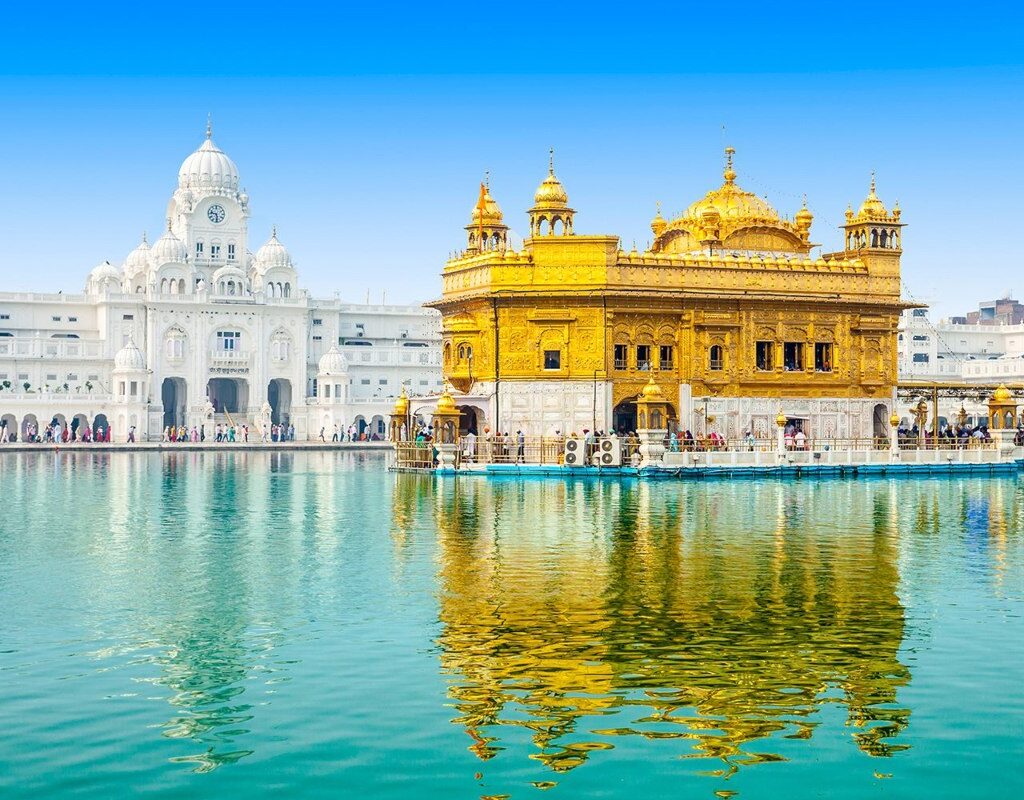Travel is more than mere locomotion; it is a spiritual quest that transports us to places that ignite our sense of wonder and veneration. In this realm of transcendental journeys, the Golden Temple of Amritsar emerges as an unparalleled gem. This architectural and spiritual marvel welcomes individuals of all faiths and backgrounds to experience a euphoria that blends the human with the divine.
The Golden Temple of Amritsar: Where Architecture and Spirituality Merge into Unity
A Sojourn to the Heart of Humanity: Uncovering the Golden Temple of Amritsar
Conveying the grandeur of the Golden Temple of Amritsar in mere words is a daunting endeavor. This sanctuary transcends religious confines to embrace humanity in its purest form. It is not merely an architectural wonder but a spiritual epicenter pulsating with devotion and neighborly love.
The journey begins with a ceremony of humility and respect. Lockers are provided where visitors can leave their footwear before entering the holy precinct. All pathways leading to the temple are designed to be inclusive, hence the presence of four gates, each facing a cardinal direction, symbolizing openness to all directions and people.
Upon washing one’s feet and covering the head, entering through the northern gate reveals the majestic sacred pool, serving as a mirror to the golden temple that seems to float above it. Come dusk, the interplay of light and reflections creates an almost supernatural vision.
Sacred Rites and Sanctuaries of the Golden Temple: Hospitality and Faith
Between the Jubi Tree and the Parikrama: Spiritual Secrets of the Golden Temple
The Parikrama is a broad corridor encircling the sacred pool, serving as a promenade for meditation and introspection. Upon reaching the eastern side, there is a designated area where women engage in their own ritual bathing in the holy waters.
Nearby, a community dining hall offers free meals to all visitors, regardless of their origin or beliefs, epitomizing the Sikh ideal of equality and altruism, supported by voluntary donations.
A bronze walkway leads devotees to the heart of the Golden Temple. Here, walls are adorned with semi-precious stones and exquisite paintings. A priest is engaged in reading the sacred book from beginning to end, a task that never ceases, keeping the divine word alive.
Not far from there stands the ancient Jubi Tree, said to possess powers of granting fertility. It is adorned with colorful ribbons in a ritual imbued with meaning and hope.
Sacred Book to Pure Gold: The History and Humanity of the Golden Temple
Beyond Devotion: How the Golden Temple Redefines Spirituality and Inclusion
Since 1604, the presence of the sacred book in the Golden Temple has been a constant. Each night it is taken to the Akal Takht, the immortal throne, representing the reverence and respect toward the ultimate religious authority.
The sacred pool was the initiative of the fourth Sikh guru, but it was his son who executed it, also constructing a temple in its midst. In 1803, the city’s maharaja chose to embellish the temple with marble and 400 kilograms of pure gold, lending it its current appearance.
The Golden Temple is not just a place of worship but a crucible where devotion intertwines with inclusivity and humanity. It is a place where every individual, regardless of origin, can find peace, purpose, and a profound connection to the universe.
A visit to the Golden Temple of Amritsar is an experience that redefines the notions of devotion, equality, and universal love. It is not merely a place of worship; it is a beacon of humanity demonstrating how true spirituality is interwoven with inclusivity.
In each embedded stone, each reflection in the sacred pool, and each heart that beats within its precincts, we find the purest gold: that of humanity. This temple serves as a tangible reminder that divinity resides in acts of kindness and the love we extend to all, without distinction.





